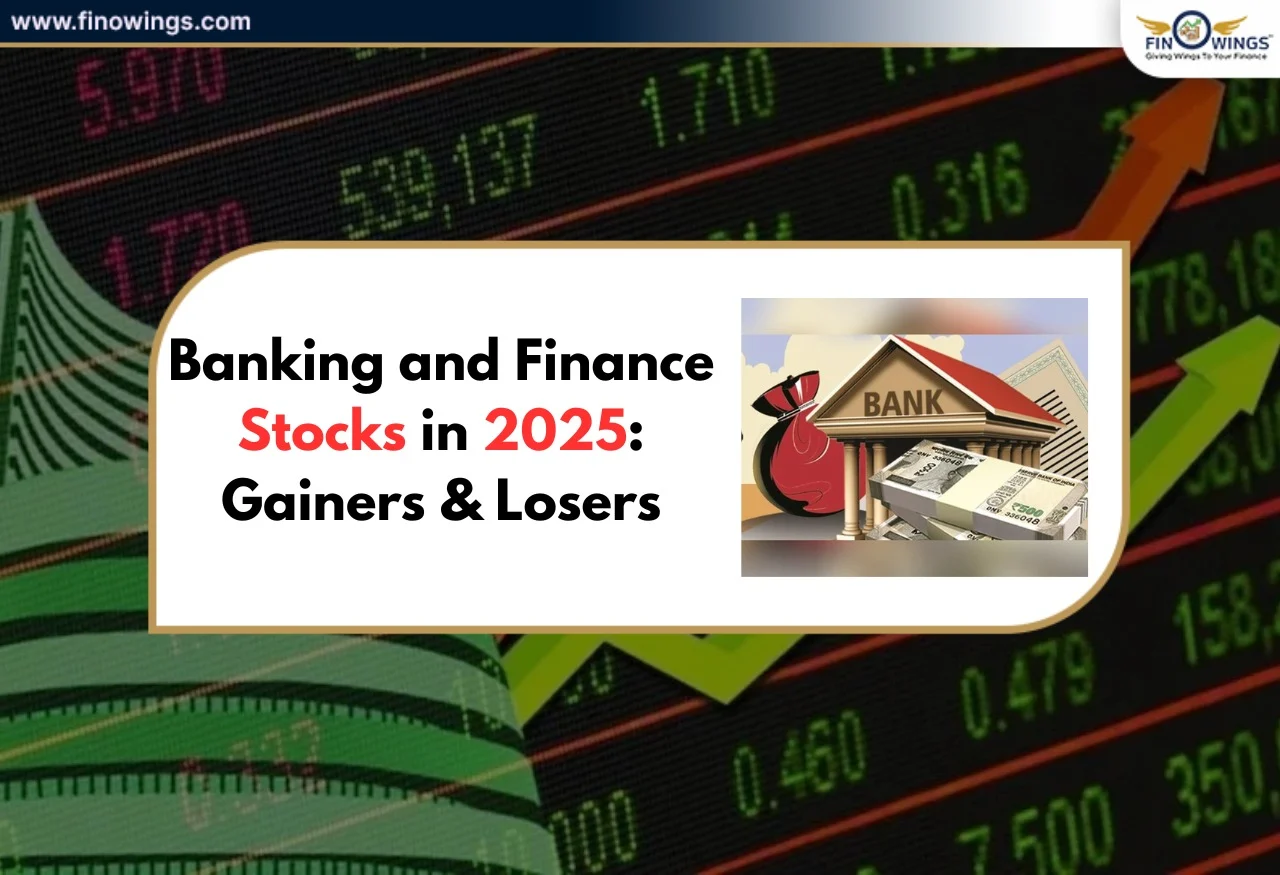Home >> Blog >> What is Treynor Ratio?
What is Treynor Ratio?

Table of Contents
Introduction
People often believe that the financial market is more about making assumptions and predictions. You can become wealthy if you are lucky enough to hit the bull's eye. Vice versa, you will only end up losing your hard-earned money.
But this is a big myth that needs to be dispelled. Technical analysis is more critical in the financial market than luck. So before investing, investors use various techniques to estimate their risk and expected return.
Ratios are one of these metrics for interpreting investment decisions. Investors can analyze risk, returns, risk-free returns, and other aspects of their investments using a variety of ratios. One of them is the Treynor ratio. This ratio aids in the analysis of the performance of your investment. In this article, we will learn about the Treynor ratio in depth.
What is Treynor Ratio?
The esteemed American economist and one of the founders of the capital asset pricing model, Jack Treynor, is credited with developing this metric.
Using the Treynor ratio, you can calculate the excess return on securities you earned for each additional unit of risk you took on the portfolio. This ratio, which measures the reward relative to the investor's systematic risk, is also known as the reward-to-volatility ratio.
The excess return is measured with the formula, representing the return you earn over and above risk-free investment. Government securities are considered risk-free investments since the risk is less here, and you only earn risk-free returns.
For instance, if you invested in both treasury bills and other equities, you are receiving a 4% return on the treasury and a 12% return on the equities. Your excess gain is, therefore, 12 – 4 = 8%.
To measure some level of systematic risk, you must also consider the beta value of the portfolio, which is a basic calculation for additional return. This is represented in the Treynor ratio. The market volatility-related change in return is measured by beta. The higher the beta is, the more volatile the market will be.
How Is Treynor Ratio useful?
The Treynor Ratio's primary goal is to give you a rough idea of the returns on your investment. It calculates the risk associated with your investment and isolates it to help you understand the pure profit you can expect from investments in securities, mutual funds, and ETFs.
To determine an investment's risk, the Treynor ratio takes the beta value into account. The beta value represents the stock market's volatility. A higher beta value indicates that the particular stock has a high level of volatility. According to experts, a beta value above 1 indicates a stock's high volatility, while a beta value equal to or below 1 indicates a stock's low volatility.
However, the average beta value calculation must provide a fair representation of the return on your investment. To compare various funds and calculate returns over them to obtain a precise performance analysis, the Treynor ratio is required.
You can decide to invest in the funds that can give you a reasonable return with a certain risk by using the Treynor ratio and assessing your risk appetite to make an informed decision.
Limitation of Treynor Ratio
Even though investors frequently use the Treynor ratio to determine investment returns, we must work hard to overcome this ratio's limitations. The age-old adage "perfection is a myth" fits here as well. The Treynor ratio is not entirely accurate for calculating the excess return. Investors, therefore, combine this ratio with other ratios to determine their investment's gain, return, or risk. Let's examine the typical limitation that investors encounter with this metric:
-
The main drawback of the Treynor ratio is that it does not perform well when your portfolio's beta value is negative. You cannot compare the funds if any fund's beta value is negative.
-
Treynor ratio is based on historical data, which is not an appropriate way to gauge return in the future. We must assume that the future return on an investment will be different from the past return due to market volatility and fluctuating security prices.
-
For instance, even if a company has earned a 15% return on its investment in the past, we cannot assume that it will continue to do so in the years to come. Depending on the market's position, returns may be high or low. The Treynor Ratio is, therefore, flawed.
-
The ratio's other drawback is that it can only be used effectively when the right index is used in the calculation. For instance, it will not display an accurate result if you evaluate the TR of a portfolio made up of mid- and small-cap shares of the Nifty 50. It is because the Nifty 50 index represents the top 50 large-cap stocks.
-
Additionally, there are problems with using beta as a risk measurement tool. Many investors contend that beta only sometimes accurately depicts the risk associated with an investment.
-
The Treynor ratio does not compare the investments to provide data on which investment is better between the two. Suppose X's TR is 3 and B's TR is 6, but this data needs to represent that B's return is better than X's.
How to Calculate Treynor Ratio?
Treynor ratio is helpful to calculate the return on your portfolio with the help of a formula. You can use this formula to measure the risk and return on your investment. The following is the formula for the Treynor value:
Treynor Ratio = (Portfolio’s Returns – Risk-free Return) /Beta Value of the Portfolio
Beta value is necessary for this metric. It helps to measure the systematic risk with the volatility at the macro level. The factors which determine the Treynor ratio are not influenced by diversification.
Example of Treynor Ratio
Let's understand the use of the Treynor ratio in depth with the help of an example. Suppose there is an ABC mutual fund, giving a return at the rate of 18%, and its beta value is 1.3, which means it is highly volatile. And assume the value of the risk-free return is 5%.
So the Treynor ratio of the ABC is = (18 – 5) / 1.3
= 13 / 1.3
= 10
The Treynor ratio of ABC Is 10; if one invests in the ABC mutual fund, their reward or risk of assuming one unit of risk will be INR 10.
Difference between Treynor Ratio and Sharpe Ratio
Treynor ratio and Sharpe ratio do share some similarities, but both ratios have some differences as well. Following are the differences between both the ratios:
|
Treynor Ratio |
Sharpe Ratio |
|
It calculates the risk-adjusted return on the portfolio based on the beta value. |
It calculates the risk-adjusted return on the portfolio based on the standard deviation gains. |
|
This ratio uses systematic risk on the portfolio. |
This ratio uses unsystematic risk in the portfolio. |
|
The Treynor ratio is only suitable for evaluating well-diversified portfolios. |
The sharper ratio can use for all kinds of portfolios. |
|
Treynor ratio measures the excess return on each unit of risk in a portfolio. |
On the other hand, the Sharper ratio helps to understand investment return. |
How to Use Treynor Ratio in Mutual Funds
The best way to determine which mutual fund is best to invest in is by using the Treynor ratio. Using this ratio, you can evaluate various mutual funds and narrow down the best mutual fund based on its risk and return.
The higher the Treynor ratio, the better the investment is considered. However, before deciding, you can use the formula to determine the Treynor ratio for various mutual funds and assess all associated risks.
Due to the use of the beta value in this metric, you can also gauge market volatility. Beta assists in keeping up with market trends to give you an idea of the return you can expect on your investment. Market changes have the most significant impact on mutual funds.
In addition, there are many other risks that you can assess through TR when selecting the best mutual fund for your investment. Finding a mutual fund that fits your needs and risk appetite is essential when investing. Treynor ratio must be used to recognize all of these factors and make wise decisions.
Conclusion
To evaluate the excess return on each unit of risk in the portfolio, the Treynor ratio is applicable. Investors widely use this metric to assess their returns and make informed decisions. The Treynor ratio is one of the best ratios for determining market performance. However, when evaluating the risk to your return, you should also keep in mind this method's drawbacks and avoid relying solely on this metric. You can learn more about this metric through the various courses offered by Agarwal Corporate. You can also consult with them to discover the ideal investment strategies to help you make wealth.
Author
Frequently Asked Questions
The Treynor ratio is a measure of risk on your portfolio return. The higher Treynor ratio, therefore, denotes a higher rate of return on your investment.
The main distinction between the Sharpe ratio and the Treynor ratio is that the former assesses all investment risk, whilst the latter assesses only systematic risk.
Beta helps to measure the volatility of the market which is useful to evaluate the market risk on investment.
















